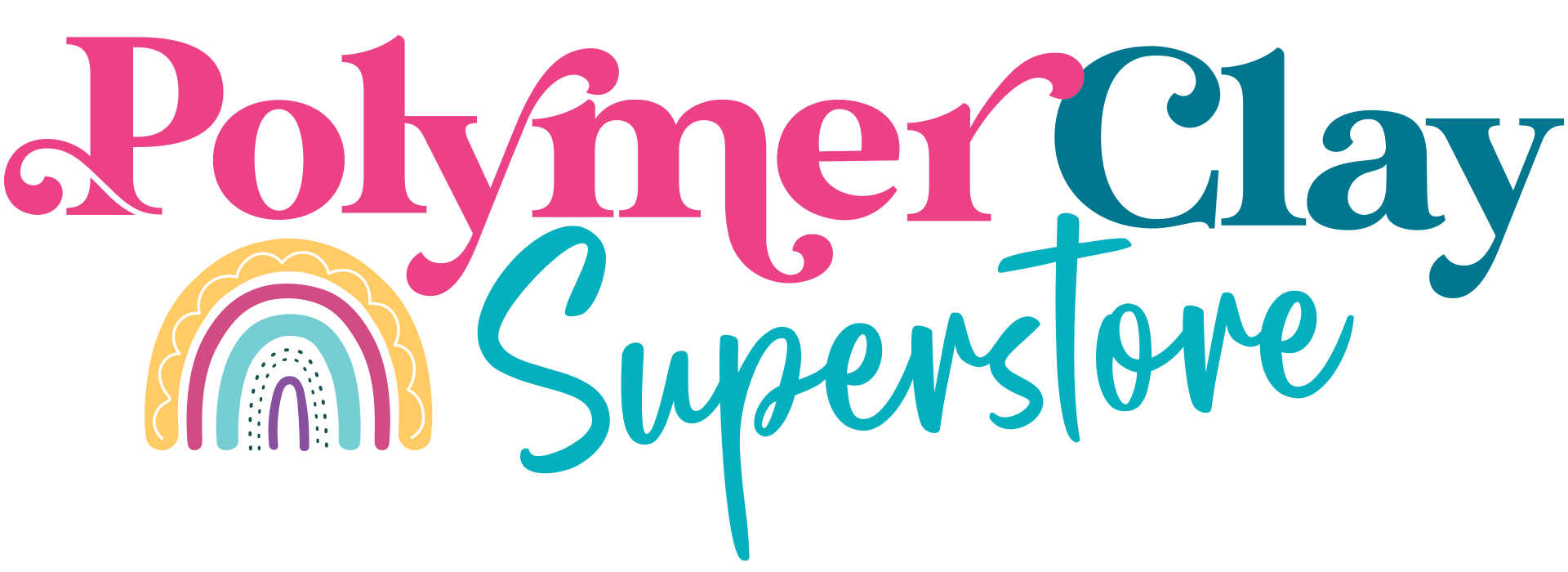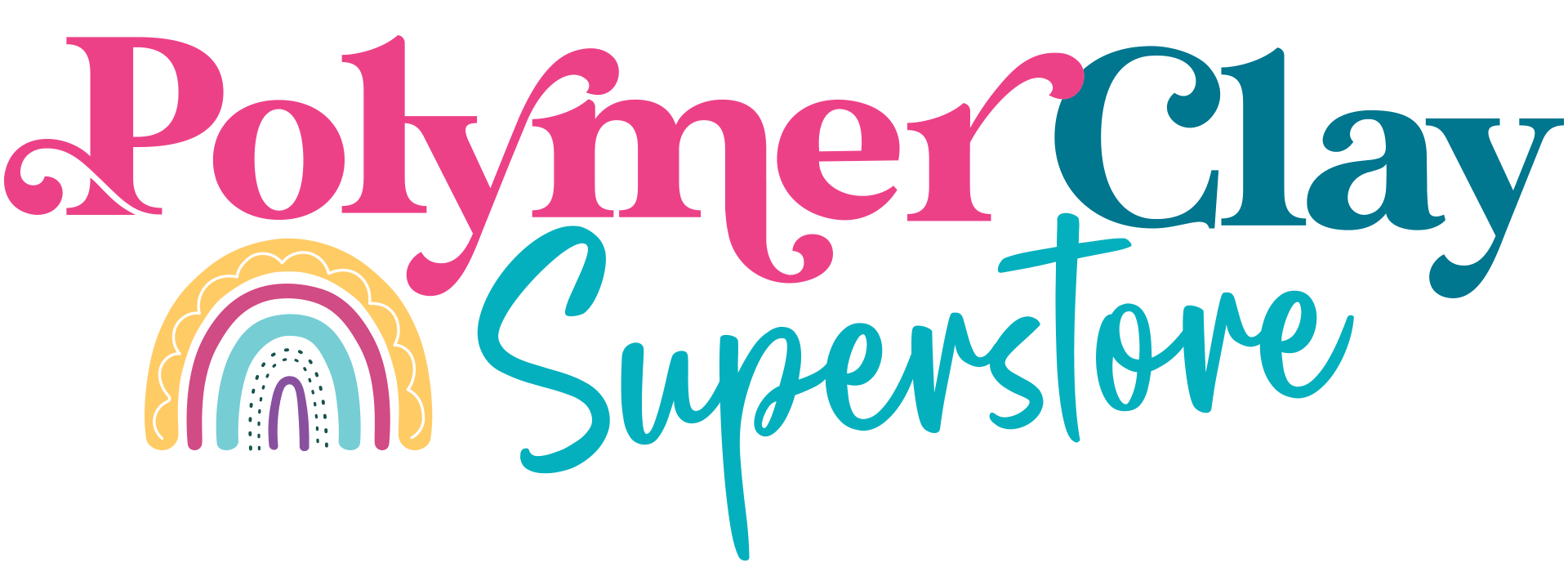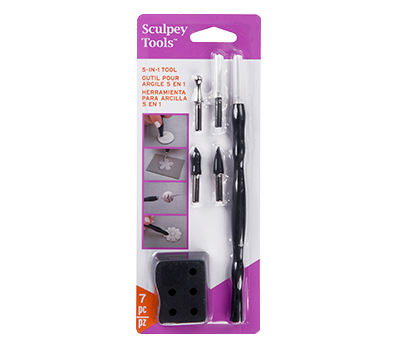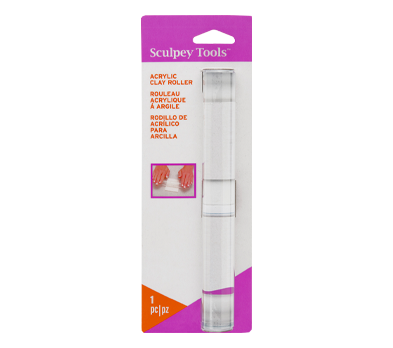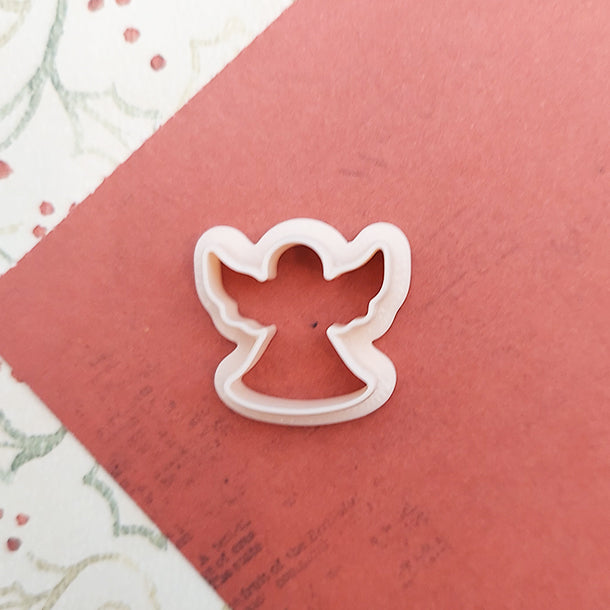What is Sculpey clay?
Sculpey is the brand name for a type of polymer clay that can be molded and put into a conventional oven to harden, as opposed to typical modeling clays, which require a much hotter oven, such as a kiln. Until it is baked, Sculpey has a consistency somewhat like Plasticine.
Is Sculpey safe for food?
Due to the testing requirements and regulations, Polyform has never tested products that would be used to hold or serve food or beverages. We can only recommend that polymer clay is not intended for these applications. All of Polyform’s products are NOT labeled as “food safe."
Is Sculpey clay waterproof?
Yes, once baked, you can seal your project with our Sculpey glazes to make them waterproof.
We do not recommend making dishes or utensils that you plan to drink from, eat off of or serve food even if they are sealed with the glazes. While our clays and glazes are non-toxic, they have not been tested for use with food and cannot be recommended for that use.
While these polymer clays and glazes are non-toxic, we have not completed any testing on any of the products to be used in aquariums.
Can you paint on polymer clay?
Yes! Oven-bake clay can be painted after curing. We recommend using water based acrylic paints.
Before painting the piece – Test a hidden section of the project first. Apply paint and allow to dry completely. Observe for any interactions with the clay.
Before glazing a painted piece – Test a hidden section of the project first. Apply glaze and allow to dry completely. Observe for any interactions with glaze.
If you seal the piece with 2 or 3 thin layers of Sculpey Glaze, you can use any type of paint. Apply thin coats rather than one thick coat for best coverage.
How do you make polymer clay jewelry?
Polymer clay can be made into many type of jewelry items such as beads, pendants, bracelets, etc. The only limit is your imagination. Need a little help getting started and inspired? Check out our section of tutorials here!
Is the clay toxic?
Please go to The Art & Creative Materials Institute for good information about the safety of art materials. Oven-bake clays in the raw, uncured state and baked state are completely safe. They have been fully tested to conform to all regulations.
To ensure safety, use common sense.
- Do not ingest clay.
- Do not make items which will be used to hold or to serve food or beverages or for smoking materials.
- Use dedicated tools, such as sculpting tools or a pasta machine and work surfaces such as cookie sheets or a Pyrex pan for clay purposes only.
- Protect work surface. Clays may stain or damage finished surfaces.
- Do not over bake.
- Do not exceed the recommended baking temperature or time. Do not use a microwave oven.
- Use an oven thermometer and follow the recommended baking temperature.
- Use good ventilation in the baking area. Wash hands before and after use.
What's the difference between Sculpey III, Premo and Souffle?
Sculpey III is easy to use and stays soft and has a matte finish when baked.
Premo is more durable, soft and firm; ideal for jewelry, home decor and functional items for everyday use.
Souffle is easy to condition, holds shape during modeling and will not break or crack when baking large pieces.
For more detailed information, see Polymer Clay Instructions
Can I mix different clays? How about different brands?
Yes. Be sure to mix the clays thoroughly before baking.
Will the finished product withstand sunlight in a garden?
Polymer clay, if exposed to direct sunlight, will fade somewhat over time. Large sculptures, such as those used in gardens, should be sealed with marine varnish or Sculpey Glazes to prevent deterioration.
How do I prevent cracking and breaking?
Cracking is almost always caused by insufficient curing or by uneven thickness in the sculpture. If you "bulk out" the thick areas with foil or use Sculpey® UltraLight as an armature, and adhere to proper baking times and temperatures, most problems can be avoided. Sometimes the cause can be from baking on an unstable or uneven surface. Always use a type of support under the clay if there are raised portions, as it softens slightly before it hardens in the baking process and can sag or crack if not properly supported.
If the clay is slightly dry, this can also cause cracking. Add some Sculpey® Clay Softener, work in, and the clay will be re-constituted. Because the clays shrink less than one percent when baking, this does not lead to cracking except in cases where the layer is extremely thin, such as over a glass vessel. Over time, because of temperature and humidity changes, a crack may occur.
